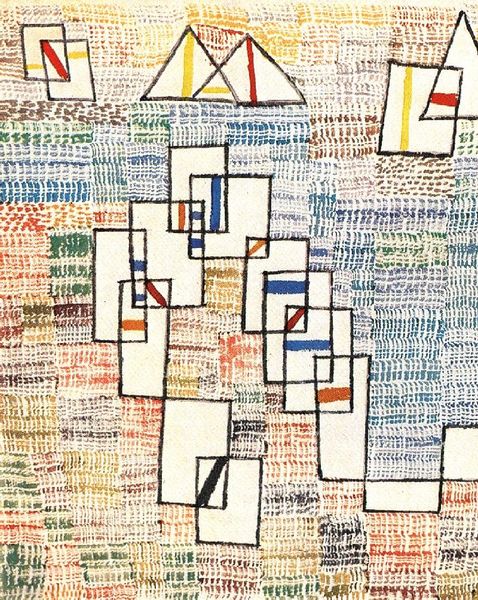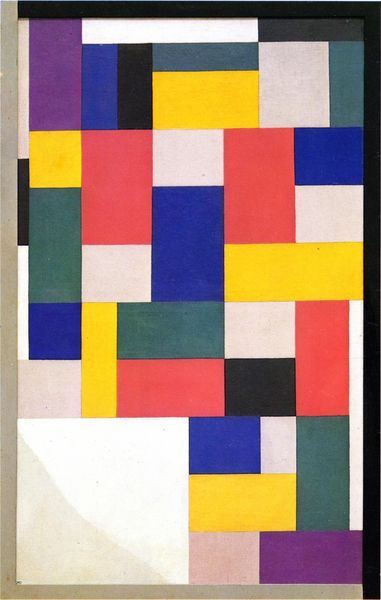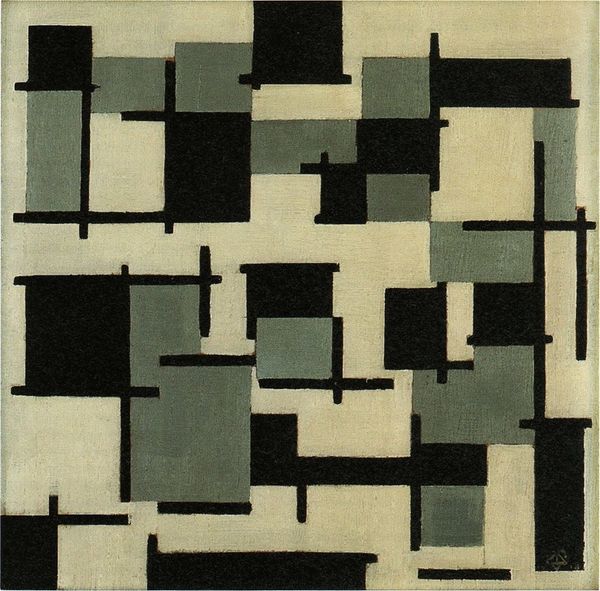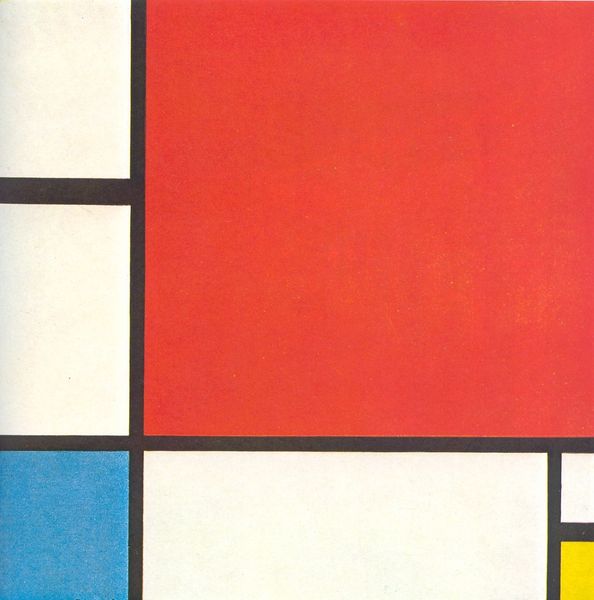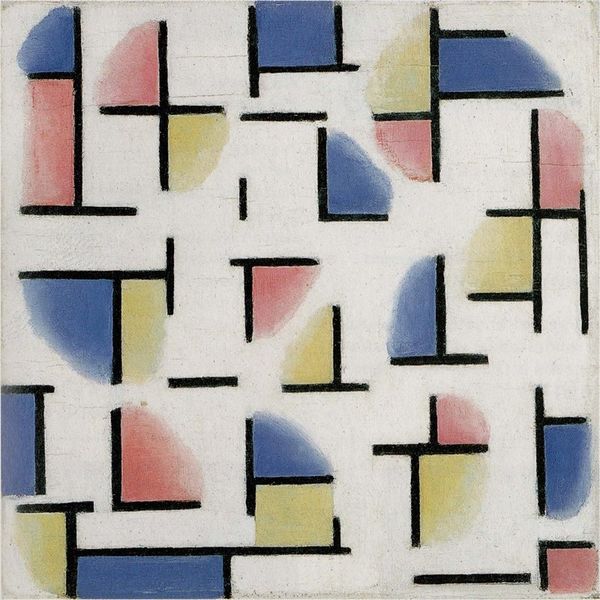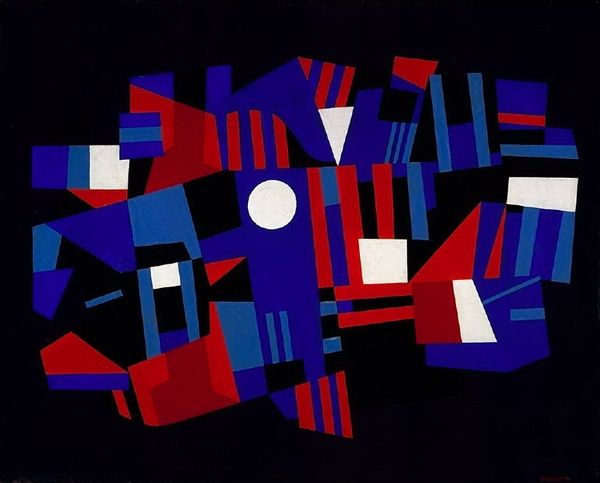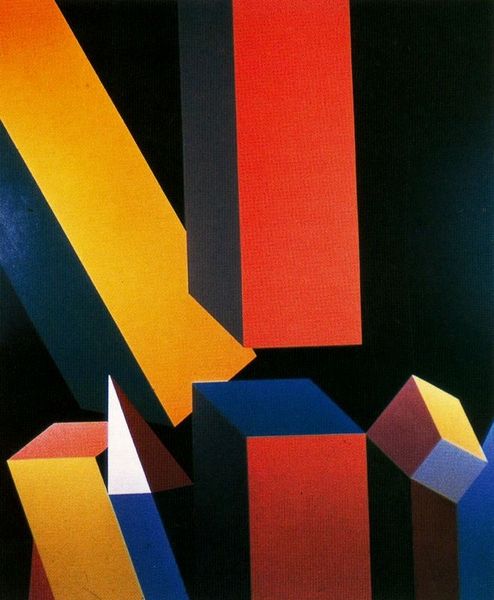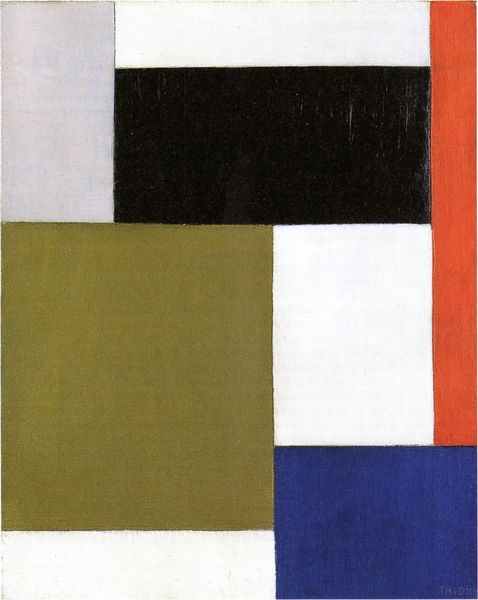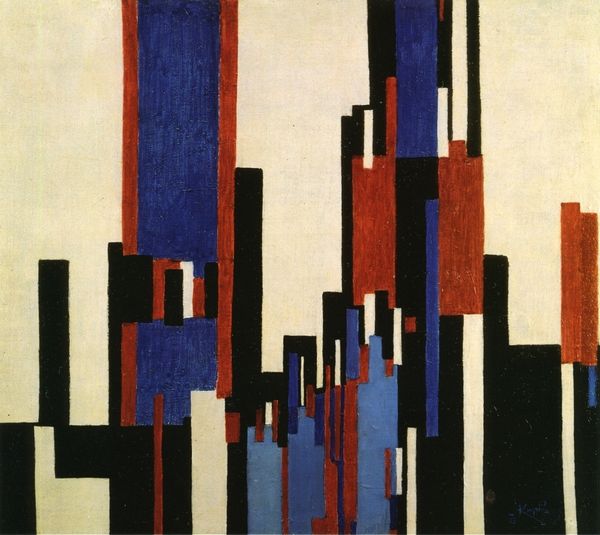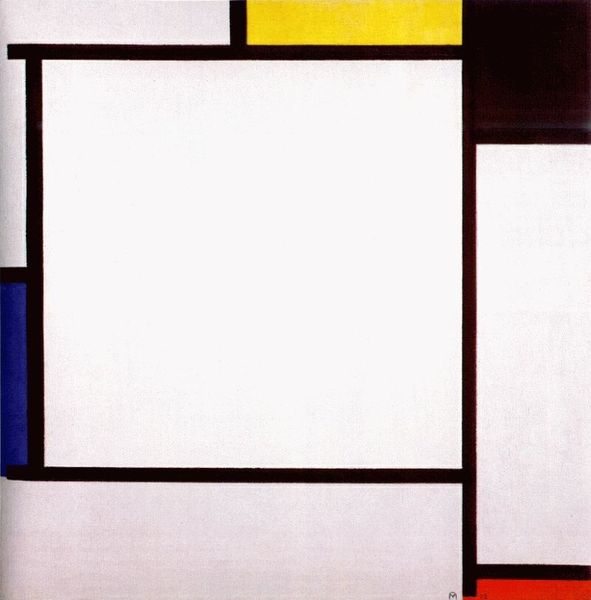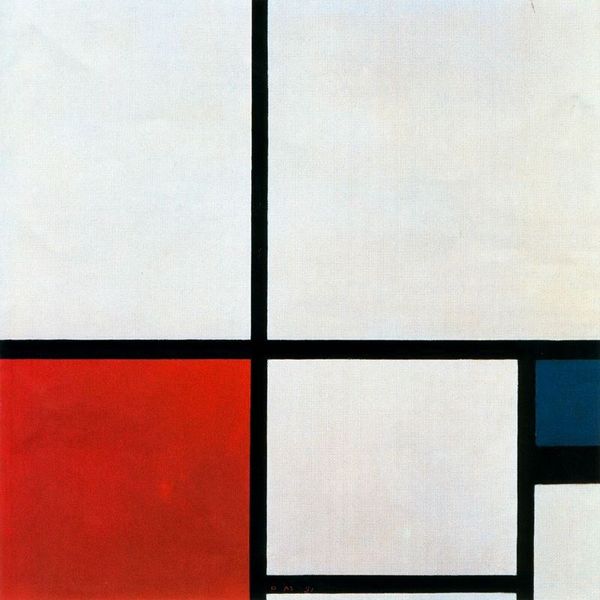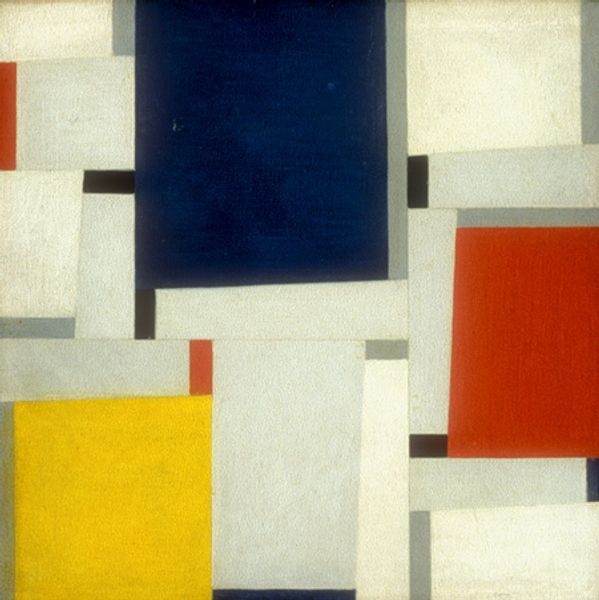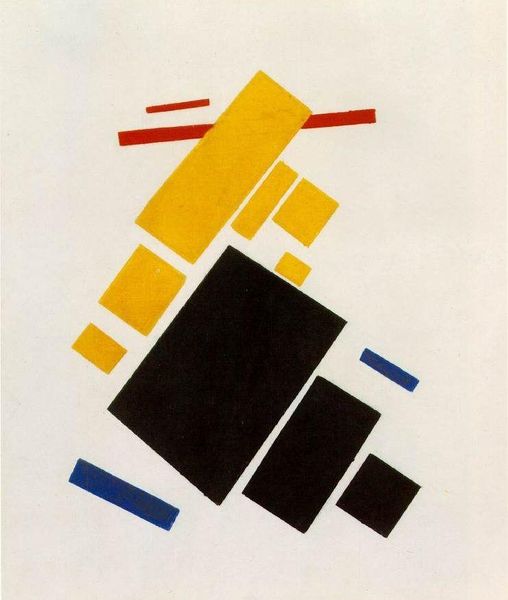
oil-paint, acrylic-paint
#
de-stijl
#
neo-plasticism
#
hand painted
#
oil-paint
#
acrylic-paint
#
geometric
#
geometric-abstraction
#
abstraction
#
line
#
modernism
#
monochrome
Copyright: Public domain
Curator: Right now, we’re looking at Piet Mondrian’s "Composition in Color A," painted in 1917. What strikes you about it? Editor: It feels… playful. Like confetti caught mid-air. The composition, though very geometric, is surprisingly dynamic, full of movement with those little rectangles dancing around. Curator: Yes, there’s a lightness. This piece exemplifies Mondrian’s move towards Neo-Plasticism. It’s a fascinating development, emerging from his earlier landscapes. It's like he extracted the very essence of order he perceived in nature. The basic forms and limited palette signify deeper symbolic meanings. Editor: Like what kind of symbolic meanings? To me, it’s more intuitive, I connect with how Mondrian arranges these colors, how some edges seem almost haphazard, making the image breathe a little. Is there a concrete intention, or is the appeal supposed to be this raw? Curator: Think of the period. This work emerges from a world war! Mondrian, along with other De Stijl artists, believed in the power of abstract form to represent a utopian vision – an ideal order beyond the chaos of the world. Red, yellow, and blue weren't just chosen for aesthetics; they're the primal colors. The horizontal and vertical lines evoke stability, the grid a harmony. Editor: I hear the historical intention, the longing for stability, I respect it. But it almost transcends that, doesn’t it? These forms feel fundamental, yes – and they hint at a greater, almost unknowable architecture to the world, too, which brings a sense of calmness. Curator: Exactly. The symbols function psychologically. Geometric abstraction strips away the particulars, leading the viewer towards a universal experience. It hints at transcendental order, expressed via geometry and line. Editor: A world where everything finds its place, eh? Curator: Indeed. Mondrian sought to portray the underlying structure of reality. That is how, more than just decoration, we perceive truth, simply because we see form perfectly at rest. Editor: Form perfectly at rest… I like that. It almost sounds like a haiku for the modern age! Curator: And a summary of our current insight into a piece of work like no other, I should hope.
Comments
No comments
Be the first to comment and join the conversation on the ultimate creative platform.

